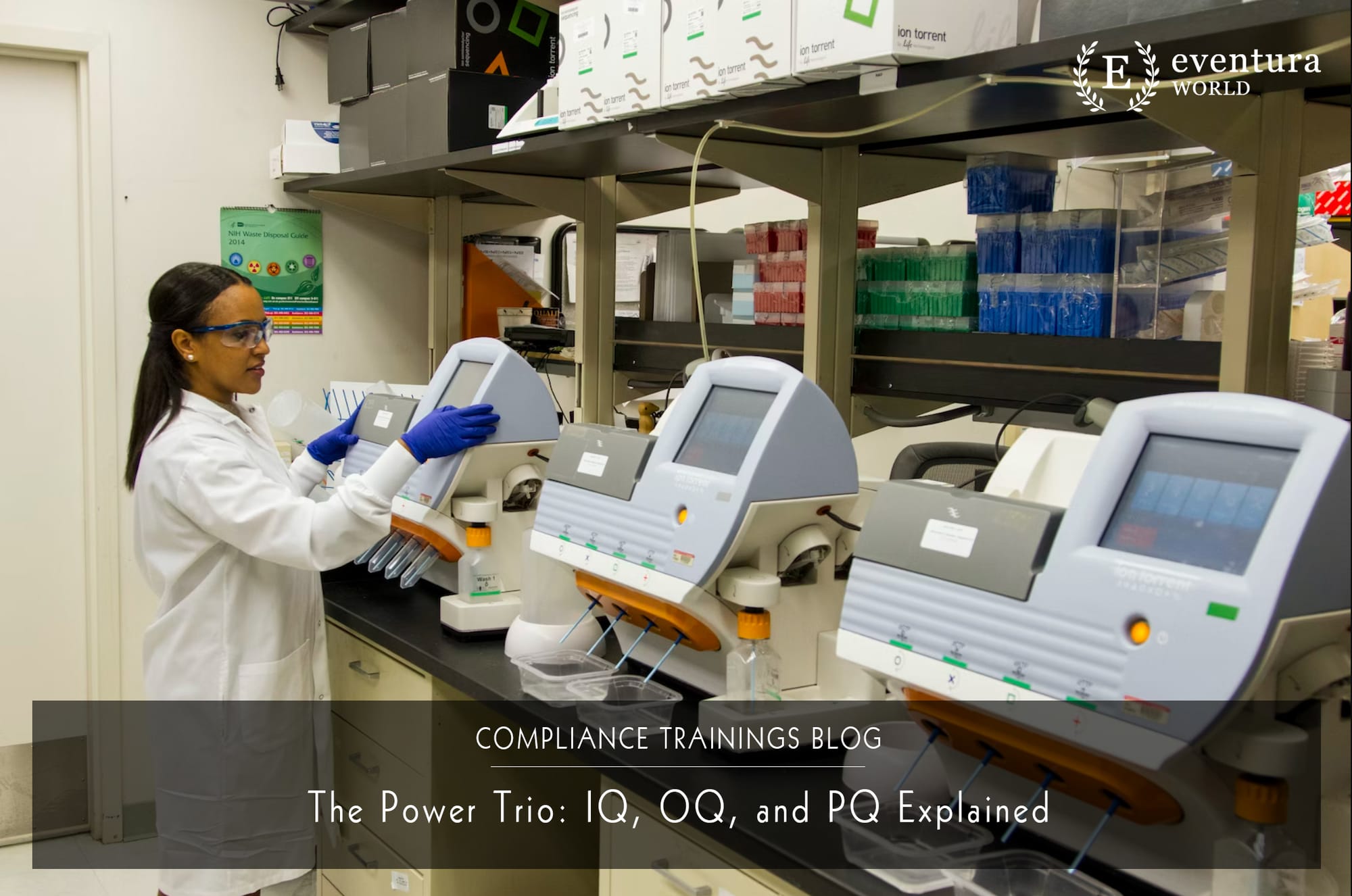The Power Trio: IQ, OQ, and PQ Explained

In the realm of product manufacturing and quality control, the verification and validation process is of paramount importance. This process involves several crucial stages, including IQ (Installation Qualification), OQ (Operational Qualification), and PQ (Performance Qualification). In this comprehensive guide, we will delve into the significance of each phase, how they contribute to ensuring product integrity, and how organizations can achieve regulatory compliance through meticulous verification and validation.
IQ (Installation Qualification):
Installation Qualification (IQ) is the initial step in the verification and validation process. It focuses on confirming that the equipment, systems, or software have been installed correctly and in accordance with predetermined specifications. IQ ensures that all necessary hardware components are properly integrated and ready for operation. This phase includes verifying documentation, conducting inspections, and ensuring compliance with the required standards. By meticulously following IQ protocols, organizations lay a solid foundation for the subsequent phases of verification and validation.
OQ (Operational Qualification):
Operational Qualification (OQ) is the next vital phase in the verification and validation process. It involves testing and verifying that the equipment or system operates as intended. OQ evaluates the performance of the equipment under various operational conditions, ensuring that it functions within predetermined parameters. This phase includes conducting rigorous tests, simulations, and measurements to assess the system's reliability, accuracy, and consistency. The goal of OQ is to identify any deviations or discrepancies and address them before proceeding to the next phase.
PQ (Performance Qualification):
Performance Qualification (PQ) is the final phase in the verification and validation process. It focuses on demonstrating that the equipment or system consistently performs in accordance with predefined specifications and meets the intended requirements. PQ involves conducting thorough performance tests, often under real-world operating conditions, to ensure that the product consistently delivers accurate and reliable results. This phase assesses factors such as product quality, precision, reliability, and reproducibility. It involves analyzing data, generating comprehensive reports, and evaluating the overall performance against predefined acceptance criteria. Successful completion of PQ provides organizations with the confidence that their product meets the necessary quality standards and regulatory requirements.
The Importance of IQ, OQ, and PQ:
The IQ, OQ, and PQ phases play a vital role in the verification and validation process, enabling product manufacturers to meet regulatory requirements, ensure product quality, and demonstrate compliance with industry standards. By following this structured approach, organizations can mitigate risks, prevent potential issues, and ensure the reliability and safety of their products. Adherence to these phases also instils confidence in customers and regulatory bodies, as it provides documented evidence of the thoroughness and consistency of the validation process. Moreover, an effective verification and validation process can help organizations reduce costs associated with product failures, recalls, and non-compliance issues.
Best Practices for Implementing IQ, OQ, and PQ:
To achieve optimal results during the IQ, OQ, and PQ phases, organizations should consider the following best practices:
Thorough Planning: Develop a comprehensive plan that outlines the specific requirements, objectives, and timelines for each phase of the verification and validation process. Clear planning ensures that all necessary resources are allocated appropriately.
Documentation and SOPs: Maintain detailed documentation throughout the process, including installation records, test protocols, and validation reports. Standard Operating Procedures (SOPs) should be in place to guide technicians and operators during the execution of each phase.
Risk Assessment: Conduct a thorough risk assessment to identify potential hazards or failure points. This enables organizations to implement appropriate measures to mitigate risks and ensure the safety and reliability of the product.
Test Execution and Data Analysis: Execute tests meticulously according to predefined protocols, ensuring accurate data collection. Analyze the data obtained during the testing phase to evaluate the product's performance against predefined acceptance criteria.
Regulatory Compliance: Stay updated with relevant regulatory requirements, industry standards, and guidelines. Ensure that the verification and validation process aligns with these regulations to guarantee compliance.
Collaboration and Communication: Foster effective collaboration and communication among cross-functional teams involved in the verification and validation process. This facilitates knowledge sharing, problem-solving, and efficient decision-making.
Conclusion:
In summary, the IQ, OQ, and PQ phases are integral to the verification and validation process in product manufacturing. By adhering to these phases diligently and following best practices, organizations can enhance product quality, meet regulatory requirements, and instill confidence among stakeholders. A well-executed verification and validation process not only ensures compliance but also mitigates risks, prevents potential issues, and fosters customer trust. By prioritizing the IQ, OQ, and PQ phases, organizations can uphold product integrity, deliver reliable and high-quality products, and stay ahead in today's competitive market.
.